Carnivorous Parrots
How many people remember these? Anyone?
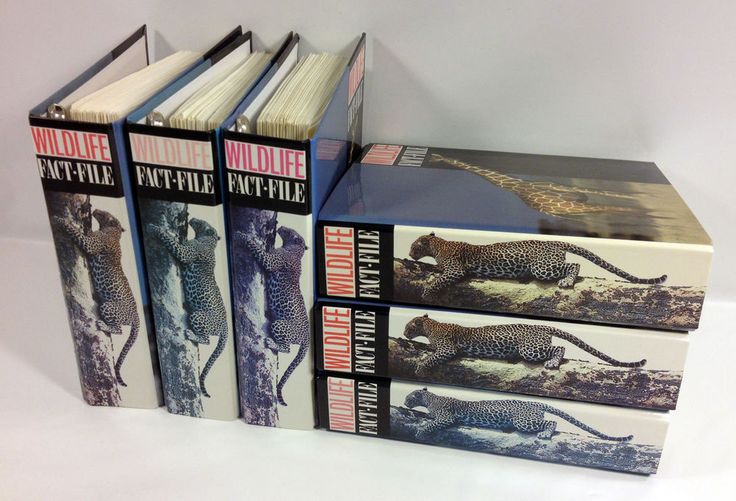
The 1990s were a decade known for their collectibles. Pokémon, Beanie Babies, Furbies, Pogs, three-ring binders of encyclopedic reports on animals, their habitats, and conservation issues…
Everyone had their favorites.
But as much as I enjoyed the 151 Pokémon... the 315 Birds, or the 343 Mammals, or the hundreds of others found among the 1,188 cards in the Wildlife Fact-File series, were what had me even more captivated as kid in the 90s.

Wildlife Fact-File was a subscription service that sent out a new set of large pamphlet-style cards each month to subscribers, profiling different animals or environmental issues, that could eventually be assembled in full into several binders worth of information.
Not unlike my future Pokémon cards, Wildlife Fact-File had color categories as well. Red for Mammals, Blue for Birds, Green for Reptiles and Amphibians, and so on. You could find Fish, Insects and Spiders, Primitive Animals, Extinct Animals, and even cards on Animal Behavior, Conservation, and North American/World Habitats among each month’s bounty as well. The creatures, their abilities, their problems, and their settings. Just like any good world-building collectible.
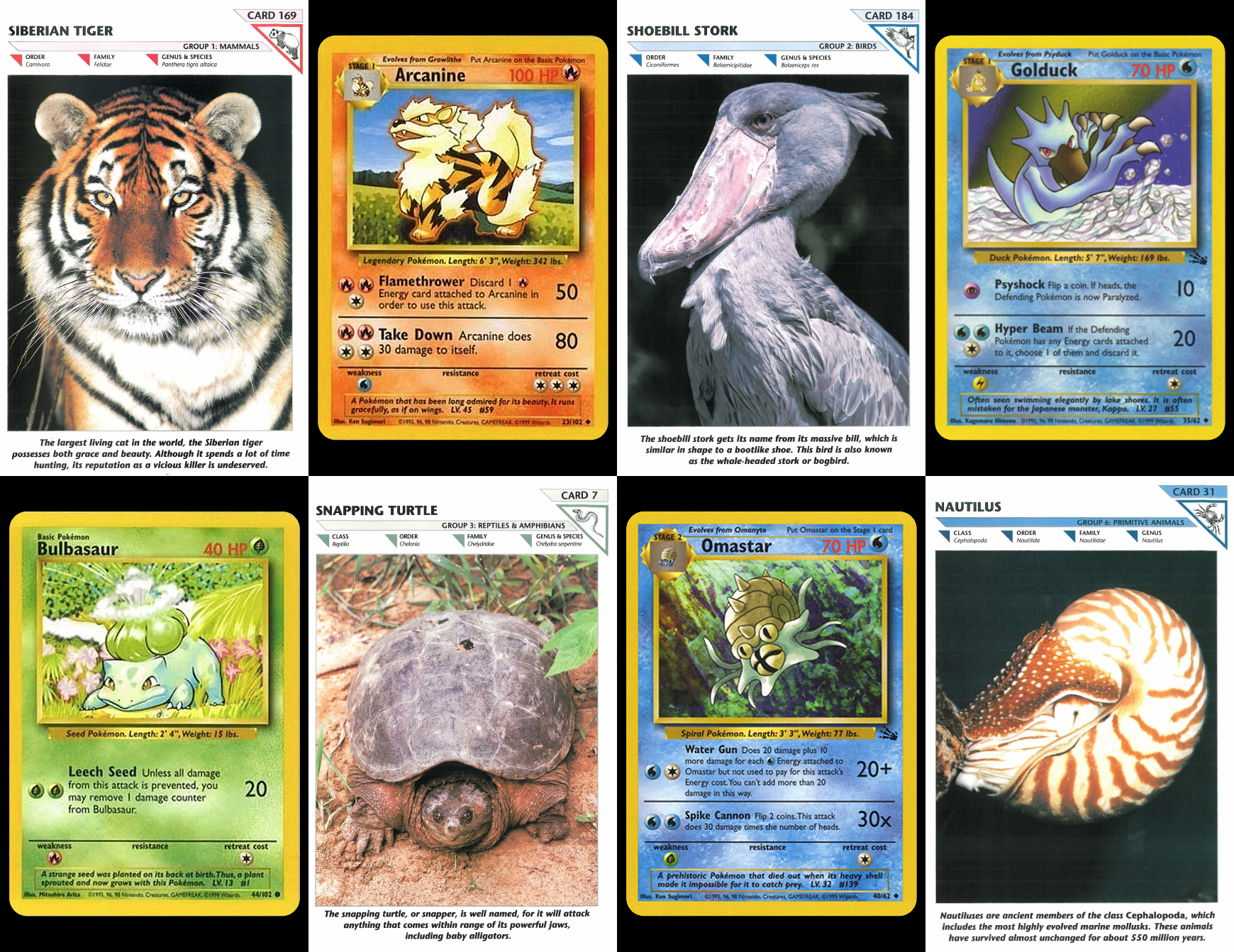
My great grandma signed me up for the monthly subscription and pretty soon we were rolling in 100s of these things. Sure, I knew the difference between an African Elephant and an Asian. Sure, I knew the difference between an alligator and a crocodile. Were you thinking I maybe didn’t know what a nautilus was? Of course, I did! Of course, I knew that! Wildlife Fact-File.
Some animals were majestic, some were badass, some were cute, and some legitimately gave me nightmares as a kid. Like that snapping turtle...
Actually, that still does give me nightmares.
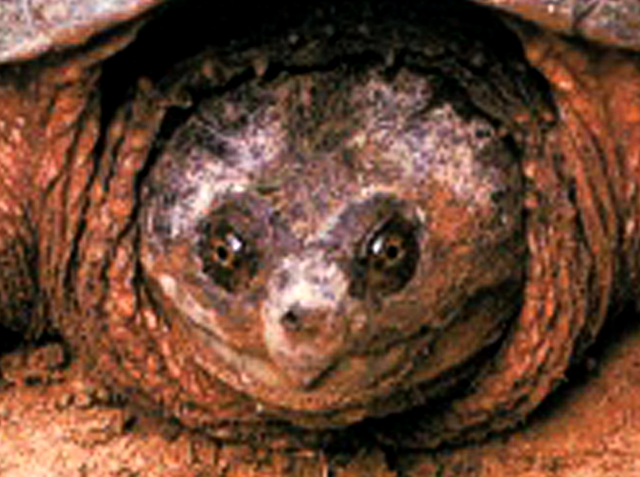
A lot of these animals were ones that you couldn’t find at the zoo, and that none of the other kids I knew seemed to know about either. (Sadly, I was the only Wildlife Fact-File collector I was aware of in my school.) One day, I’ll see some of these animals in the wild for myself, I thought. I pictured myself adventuring through the jungles of India.
Interestingly to me, some of the strangest and most interesting wildlife lived in the most isolated places.

Australia had the unusual platypus with its poisonous spurs, Madagascar had its ring-tailed lemur, Indonesia the gigantic Komodo dragon, and New Zealand had the flightless kiwi.
I remember thinking the platypus and kiwi in particular were two of the oddest animals I had ever seen, as if several other animals had been thrown into some bizarre science experiment and produced these two abnormalities. These unique island inhabitants had piqued my interest.
Then came the kea in the mail, Group 2: Birds, Card 177.
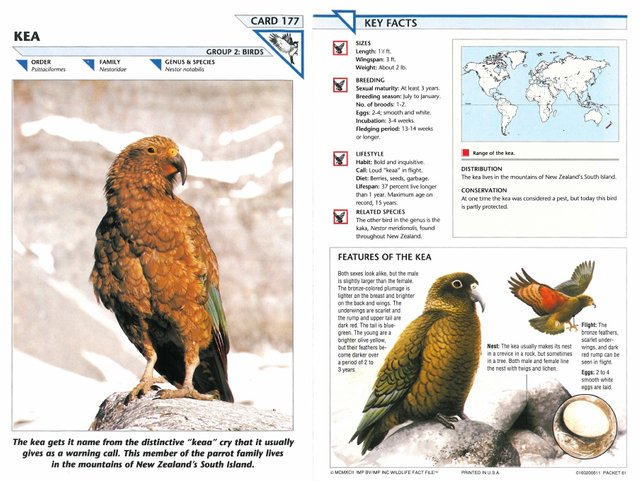
“Kea” was all it said. Just K-E-A.
And there stood a parrot… on a snowy mountain?
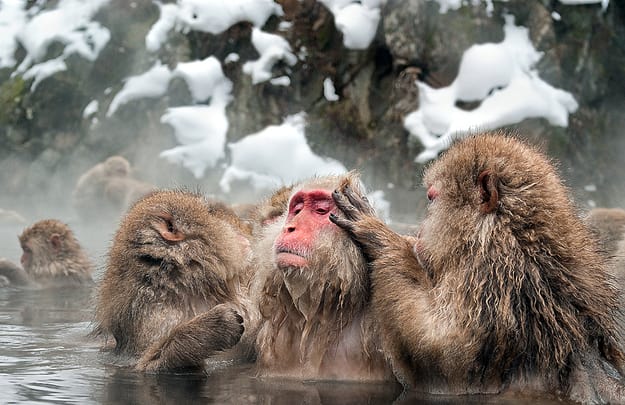
This was like discovering monkeys in hot springs in Japan. Mountain parrots? Where were they from?
New Zealand again.
I read on.
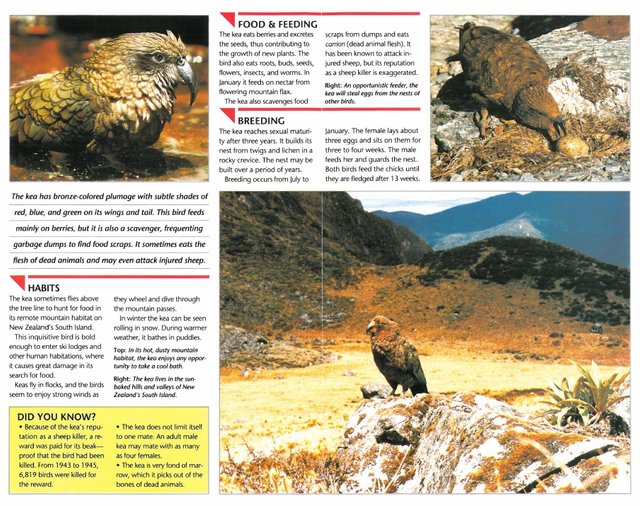
What?
Carnivorous mountain parrots that can take down sheep?
That’s unique.
And it certainly was unique, as it is the only parrot in the world to exist in such a climate with such a diet. A curious bird indeed. Its fluffy coat of feathers an appealing earth-toned gradient from rusty brown to pale green, with a sharp hooked beak, golden-yellow eyes, and flashy reds and oranges under its wings. This hardy alpine bird had an interesting appeal to me.
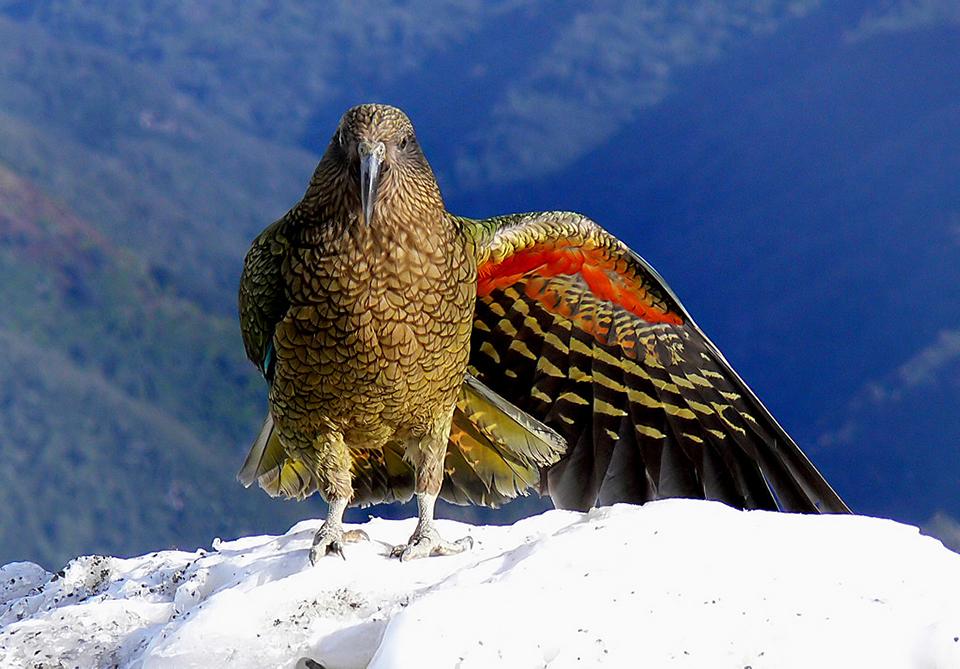
I grew up in Wisconsin, and I was pretty disappointed there were never any parrots flying around, so learning of the snow-adept kea was quite a find for my imagination.
Soon, I sorted through all of my cards to find just how many strange birds inhabited these faraway islands of New Zealand.
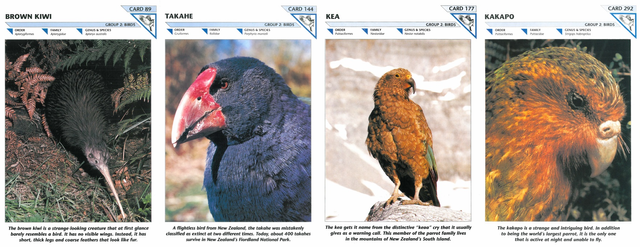
I lined them up. #89, the Brown Kiwi; #144, the Takahe; #177, the Kea; #292, the Kakapo; and… was that it? (Well, keep in mind, Wildlife Fact-File was by no means a complete catalog of every animal ever, but was four all there were in my collection?) I thought there was one more.
Ah, there was.
(to be continued)
Those snapping turtles are nightmare fuel for sure. We have them in our neighborhood. One year I got a snorkel and goggles for my birthday, and went swimming in the usual pond near my mother's house. Saw a massive snapping turtle meandering along the bottom, with a shell nearly a meter across.
I still swim in that pond but I don't look under the surface any more.
Wow, huge! I only ever saw a snapping turtle in the wild once. I was with my mom and sister as a kid hiking through a park and we stumbled upon a dead one. I thought of that card and didn't want to get too close, even still. I don't blame you.
We had one laying eggs in the yard once, so we called town animal control to remove it. They showed up with a standard size trash can and the turtle would not fit inside!
I'm beginning to see where the design for Bowser from Super Mario may have come from... Just add spikes.
If only we had fireballs!